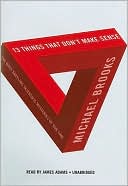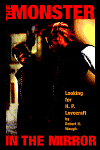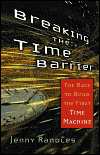
13 Things That Don't Make Sense, by Michael Brooks
Book Review by Nick DeMarino
From dark energy and the apparent suspension of the laws of physics across space, to the more terrestrial matters of sex and the placebo effect, Brooks' command of the material is impeccable. Each subject and theory is presented alongside corroborating and contradicting evidence. The progression of subjects as well as their relation to each other is intriguing and rushes the reader through a whirlwind of theories. Voice is given to proponents and opponents, although each subject's inclusion in the book portends the final verdict: that there are no answers (at least not yet).
While Brooks holds a Ph.D. in quantum physics, he assumes no prior knowledge, explaining each concept in patient detail. His colorful descriptions range from mundane comparisons to appeals to pop culture. An example of the former: The uncertainty principle, when applied to field theory produces natural fluctuations in the properties of certain regions of the universe. It is rather like having a balloon that is peppered with weak spots; as the universe inflates, these fluctuations can grow, producing a new region of space and time." An example of the latter: [Viruses] are evolutionary aberrations whose existence necessitates destruction, rather like the cruelly amoral machines in the movie The Terminator..
Much like Lewis Thomas' contributions to poetic, science-themed prose, Brooks pushes the dynamics of scientific, literary non-fiction. He uses history as the setting, charting the lifeline of ideas much like the rise and fall of family lines in Victorian novels. Brooks is particularly sensitive to social constructs, especially the stigma attached to challenging ideas. In this sense, he is a social commentator, ostracizing those whom ostracize, deriding those whom have slowed scientific progress by blackballing rogue scientists.
The cover of the book is noteworthy for its uncanny presentation of the book's subject matter. A cursory glance reveals a problematic optical illusion akin to a Moebius Strip or an M.C. Escher painting. Upon further examination there is another explanation; the image is a series of three shaded, interlocking sevens. In the end, the solutions to the problems Douglas raises in 13 Things That Don't Make Sense require a change of perspective.
While the ideas contained in the volume are revolutionary in scope, Brooks is ultimately conservative about the impending season of their fruition. Citing Kuhn and Darwin, he states: It will be the people who are now young and rising who will find life on the planets and moons of our solar system, maybe even answering a call from beyond those boundaries. It is they who will perhaps create life or rewrite Einstein's relativity to take account of dark matter and put the Pioneer probes to rest. Perhaps some genius still currently in preschool will use her mathematical skills to solve the riddle of dark energy.
The last sentence is particularly telling, for the story of science is also the story of individuals. They are imbedded within society, both influenced by and influencing its course.
|
Click here to buy 13 Things That Don't Make Sense, by Michael Brooks on Amazon
|
13 Things That Don't Make Sense, by Michael Brooks on Amazon

| More Books You Might Like |
| Comments on 13 Things That Don't Make Sense, by Michael Brooks |
| There are no comments on this book. |


